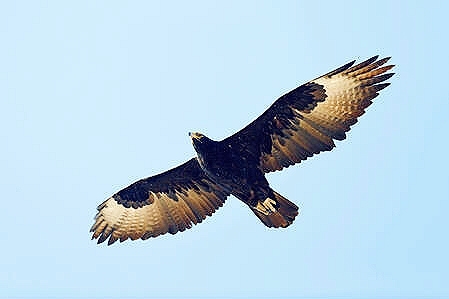The Verreaux's eagle, Aquila verreauxii, is a formidable bird of prey, predominantly found in the mountainous regions of southern and eastern Africa. This majestic raptor is also known as the black eagle, particularly in southern Africa, though it should not be confused with the similarly named species of Asia. The adult Verreaux's eagle is characterized by its striking jet-black plumage, with a contrasting white V-shaped patch on its back and rump, visible during flight. The cere, eye-ring, and "eyebrows" are a vivid yellow, providing a stark contrast against its dark feathers. This species is one of the largest eagles, with a wingspan stretching between 1.81 to 2.3 metres. |

